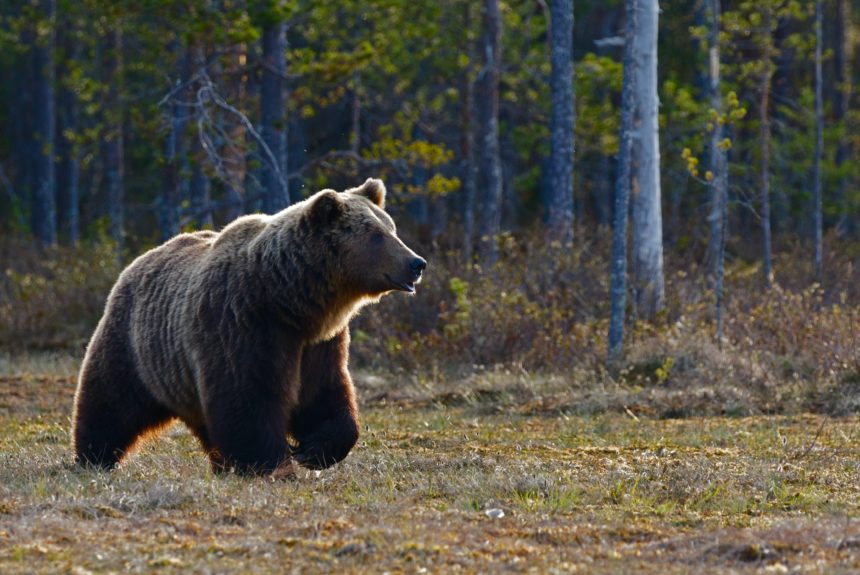Grizzly bears once roamed the United States, but their populations dwindled. In 1975, with an American grizzly population of roughly 130 individual bears remaining, the species was listed under the federal Endangered Species Act (ESA). Since then, the grizzly population in the lower 48 states has rebounded to an estimated 2,000 individuals.
After recent petitions from states to delist the bears, the federal government has announced that grizzly bears will remain protected under the ESA. Here’s what’s going on and what the near future looks like for American grizzlies:
Why is listing status in the news?
When grizzly bears became a listed species under the ESA, the U.S. Fish and Wildlife Services afforded them specific regulatory protections. These protections include limiting the situations in which an animal may be killed or harmed, banning the export or import of that species, defining critical habitat areas, and building recovery plans and metrics (that may or may not be effectively implemented and tracked). ESA regulations typically can keep species from extinction but offer roadblocks for state and local species management.
The states of Montana, Wyoming, and Idaho petitioned the federal government for grizzly bear delisting. The petitions pointed toward grizzly recovery in specific management regions. The federal government reviewed and denied these petitions, with the bears remaining listed as threatened under the ESA.
What’s being said about the decision?
Leaders of petitioning states are, naturally, not happy about the decision. After the government announced grizzlies would remain protected under the ESA, Montana Governor Greg Gianforte stated:
“The full recovery of the grizzly bear across the Rocky Mountain region should be acknowledged and celebrated–period. It’s time for the U.S. Fish and Wildlife Service to catch up with the science, follow the law, and return management of grizzlies to the states where it belongs. We look forward to working with the incoming Trump administration to explore a new path forward.”
>>>READ: Reviving the God Squad to Tackle ESA Reform
Conservation groups that bend toward broader federal animal protections generally applaud the decision to keep grizzly bears listed under the ESA.
“I’m relieved that the Fish and Wildlife Service found that grizzly bears still need Endangered Species Act safeguards,” commented Andrea Zaccardi, carnivore conservation program legal director at the Center for Biological Diversity. “With ongoing federal protections, grizzlies in the Northern Rocky Mountains and North Cascades will have a real chance at long-term recovery, instead of being gunned down and mounted on trophy walls.”
The Property and Environment Research Center, a conservation organization known for its incentive- and market-based approach to wildlife recovery, thinks the decision to keep the species listed is a mistake. In response to the announcement that grizzlies would keep their listed status, the organization released the following statement:
“The science is clear: grizzly populations in the Greater Yellowstone and Northern Continental Divide ecosystems have rebounded to healthy levels more than double their recovery target and should be delisted. Today’s decision penalizes conservation by holding the expansion of these populations against their delisting. The Endangered Species Act process is broken when it ignores science and punishes rather than rewards recovery.”
>>>READ: The Endangered Species Act: 50 Years Old and in Need of Reform
What does the near future look like for grizzly bears?
While the federal government has left American grizzlies listed under the ESA, U.S. Fish and Wildlife has proposed other changes that might lead to eventual delisting. These changes include clarifying geographic areas where grizzlies are protected and broader regulatory flexibility for state agencies and individuals dealing with grizzly conflicts.
“This reclassification will facilitate recovery of grizzly bears and provide a stronger foundation for eventual delisting,” explained Martha Williams, U.S. Fish and Wildlife Service Director during the Biden administration. “And the proposed changes to our 4(d) rule will provide management agencies and landowners more tools and flexibility to deal with human/bear conflicts, an essential part of grizzly bear recovery.”
The change of administrations may also impact how grizzly bear management is handled in the coming years. Under a Republican-led government, long-necessary ESA reform might be on the table.
No one wants to see grizzly bears become extinct in the United States. Most Americans want these bear populations to be protected. However, with the ESA’s limited record for fully recovering listed animal populations, endless listing may harm grizzly recovery instead of helping.
The views and opinions expressed are those of the author’s and do not necessarily reflect the official policy or position of C3.
